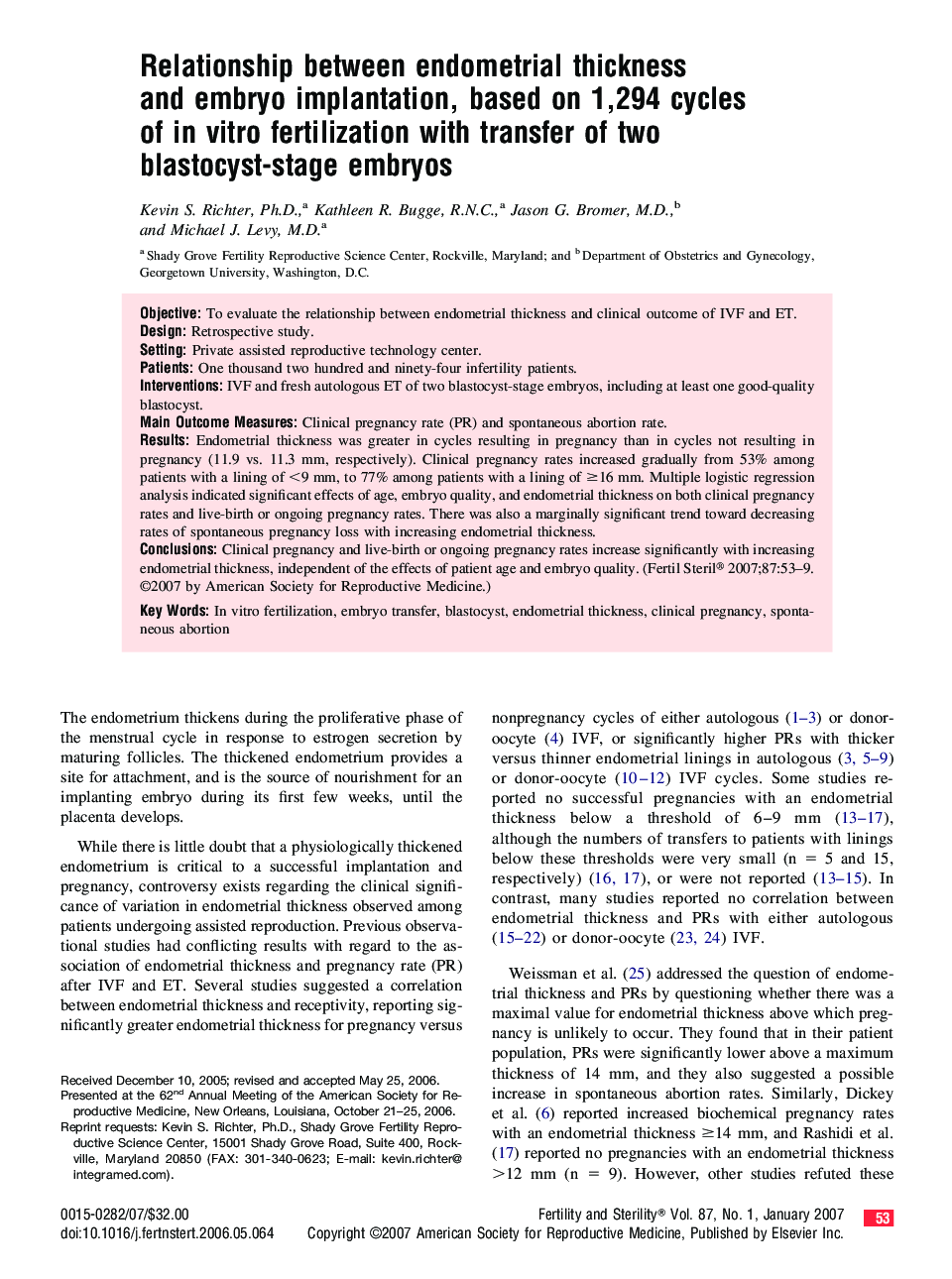| Article ID | Journal | Published Year | Pages | File Type |
|---|---|---|---|---|
| 3940412 | Fertility and Sterility | 2007 | 7 Pages |
ObjectiveTo evaluate the relationship between endometrial thickness and clinical outcome of IVF and ET.DesignRetrospective study.SettingPrivate assisted reproductive technology center.PatientsOne thousand two hundred and ninety-four infertility patients.InterventionsIVF and fresh autologous ET of two blastocyst-stage embryos, including at least one good-quality blastocyst.Main Outcome MeasuresClinical pregnancy rate (PR) and spontaneous abortion rate.ResultsEndometrial thickness was greater in cycles resulting in pregnancy than in cycles not resulting in pregnancy (11.9 vs. 11.3 mm, respectively). Clinical pregnancy rates increased gradually from 53% among patients with a lining of <9 mm, to 77% among patients with a lining of ≥16 mm. Multiple logistic regression analysis indicated significant effects of age, embryo quality, and endometrial thickness on both clinical pregnancy rates and live-birth or ongoing pregnancy rates. There was also a marginally significant trend toward decreasing rates of spontaneous pregnancy loss with increasing endometrial thickness.ConclusionsClinical pregnancy and live-birth or ongoing pregnancy rates increase significantly with increasing endometrial thickness, independent of the effects of patient age and embryo quality.
